11 Different Types of Spruce Trees (With Pictures)
-

- Last updated:
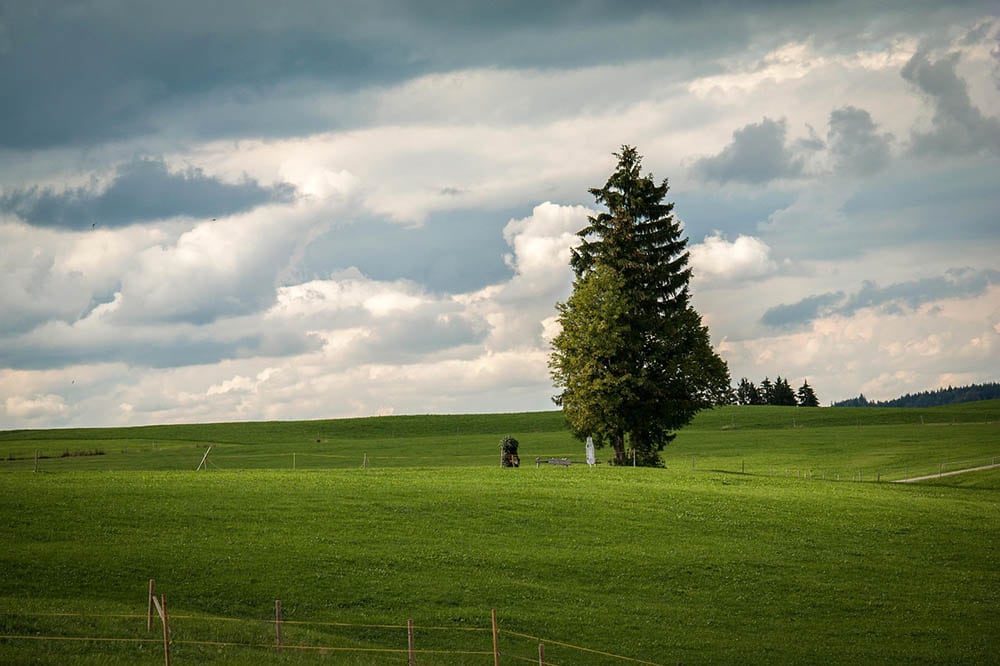
Spruce trees are a group of evergreen and deciduous coniferous trees from the Pinaceae family. Most spruces can easily be identified by their compact, narrow crown and drooping branchlets. These species grow in a variety of climates including coastal areas, high altitudes, and boreal forests.
Many types of spruce trees serve as ornamental plantings in urban parks and gardens, while others provide wood for construction beams, fences, or furniture making.

The 11 Types of Spruce Trees
1. Sitka Spruce

The Sitka spruce is native to North America’s West Coast where it can be found on mountainsides throughout Alaska down to Oregon. Also known as “the queen of the forest,” this tree can grow up to 200 feet tall and has a trunk diameter of up to 8 feet. The Sitka spruce is an important timber tree and is used for making lumber, plywood, poles, masts, and other construction applications.
2. White Spruce

The white spruce is a widespread North American species that grows from Newfoundland and Labrador west to British Columbia and as far south as Minnesota and West Virginia. This tree typically reaches heights of 50-70 feet with a trunk diameter of up to 2 feet. The wood from the white spruce is used in the manufacture of boxes, crates, pallets, and other shipping containers.
3. Black Spruce

The black spruce is a widespread North American species that is native to the boreal forest regions of Canada and the Northern United States. This tree typically grows to heights of 30-50 feet and has a trunk diameter of up to 1 foot. The wood from the black spruce is used in the manufacture of pulp, paper, and other wood products.
4. Engelmann Spruce

The Engelmann spruce is a widespread North American species that is native to the Rocky Mountains and adjacent ranges from Alberta to New Mexico. This tree typically grows to heights of 60-80 feet and has a trunk diameter of up to 2 feet. The wood from the Engelmann spruce is used for applications such as construction beams, fence posts, and furniture making.
5. Red Spruce
The red spruce is native to Northeastern North America from Southern Quebec and Newfoundland and is found as far south as Northern Pennsylvania and as far west as Minnesota. This tree typically grows at heights of 70-90 feet with a trunk diameter of up to 3 feet. The wood from the red spruce is used in general construction applications such as flooring, roofing, beams, posts, veneer plywood, and pulp.
- Related Read: 12 Types of Trees in Pennsylvania (With Pictures)
6. Black Hills Spruce
The Black Hills spruce tree is one hardy tree that can run through most climates and survive most soil conditions. This makes it able to easily adapt to harsh conditions. However, it does need water to grow properly and needs well-drained soil. The needles are about one inch long which are dark green or blue-green. When they’re young the branches are white/grey that becomes brown as the winter approaches.
7. Norway Spruce
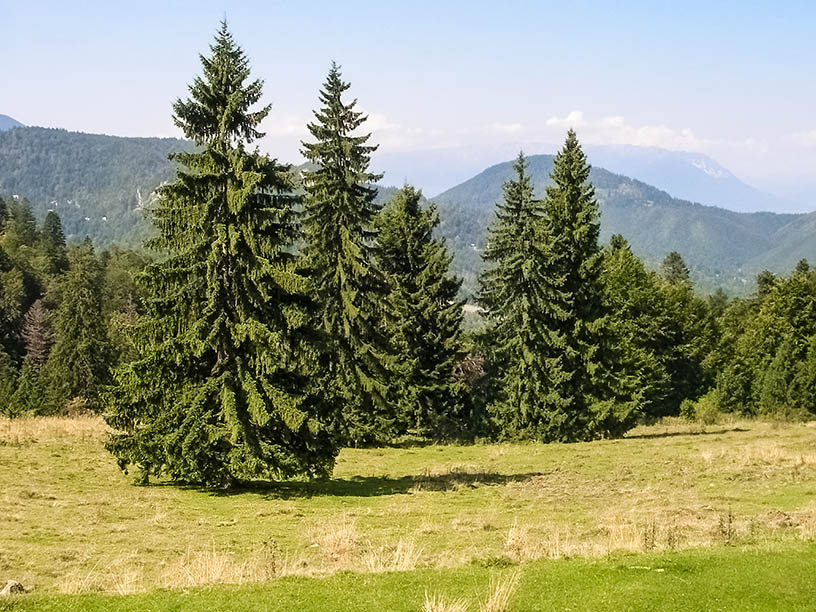
These types of spruces are the most popular to be used as Christmas trees because they hold their needles very well during December and can be kept indoors for weeks with little care. The needle length runs short at one inch, but you’ll notice that they’re sharp and stiff. They also feature large cones which makes them easy to spot among other spruce types. This evergreen can adapt well to various soil conditions (except for wet soils), even acidic ones (pH 4-6). It’s also good for colder climates since it can withstand harsh winter weather quite easily due to its nature of growing in cold climate areas like Northern Europe.
8. Blue Colorado Spruce

The blue Colorado spruces are dark evergreens which makes them easy to spot among other types of spruces. They have bluish-green needles that are about one to two inches long and their cones are also blue. When you look at this type of spruce closely, the bark easily flakes off which is different from most other types of spruce trees that have thicker bark.
It prefers well-drained soils that are rich in organic matters but can adapt to poor quality soils too with proper care. Although it’s good for colder climates, it prefers to stay in moist areas —this would be due to its need for plenty of water. This type of spruce is often used as Christmas trees because they keep their needles well.
See also: 20 Types of Trees in Colorado (with Pictures)
9. Serbian Spruce
This type of spruce is found in Europe and Asia Minor and has bluish-green needles that are 2-4 inches long. They need well-drained soils to grow properly and will not do well in areas with a lot of moisture. This type of spruce is often used for landscaping purposes and makes a good addition to any garden.
10. Douglas Fir

Despite having the word “fir” in its name, this tree is actually part of the spruce family. The Douglas fir is native to much of Western North America and has been extensively planted throughout the region as an important commercial timber species. This tree typically grows at heights of 80-200 feet tall with a trunk diameter of up to 5 feet. The wood from the Douglas fir is used in general construction applications such as beams, flooring, posts, poles, studs, structural panels such as oriented strand board (OSB), plywood, and medium-density fiberboard (MDF).
11. Eastern Larch
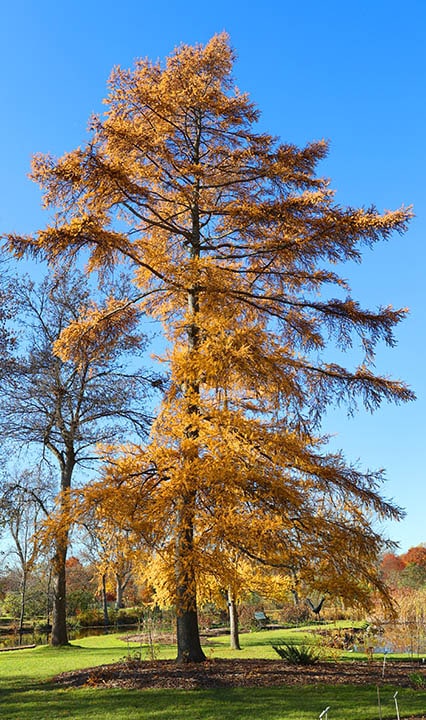
The eastern larch is native to Eastern North America and can be found from Newfoundland to as far south as Pennsylvania and as far west as Minnesota. This tree typically grows at heights of 50-80 feet tall with a trunk diameter of up to 2 feet. The wood from the Eastern larch is used for construction timbers, rough lumber, pulpwood, and firewood.

How Can You Tell What Kind of Spruce Tree You Have?
There are several different types of spruce trees. These four methods will help you mount an expedition to discover which type your tree is.
1. The Needles
Spruce tree needles are very sharp and have a flat, round base. If you cut across the needle lengthwise, it will appear to have two halves that look similar to a cross-section of a cone. However, they can be slightly more difficult to distinguish from pine trees because there is only a small difference in the color between spruce needles and pine needles (spruce needles are green while pine needles are typically brown). Spruce trees also tend to be much smaller than other types of evergreen trees like cedar or fir.
2. Resin Blisters On Bark
If you take some time looking at the bark of spruce trees, you may notice little resin blisters here and there along its trunk (the blisters are typically about the size of a small pea). They may appear white at first, but if you leave them exposed to sunlight for several days they will turn darker in color (typically brown or black). An easier way to tell if it is a spruce tree is by looking at the top of the trunk. If no branches are growing out of the top half of the tree’s circumference, it is most likely a spruce tree.
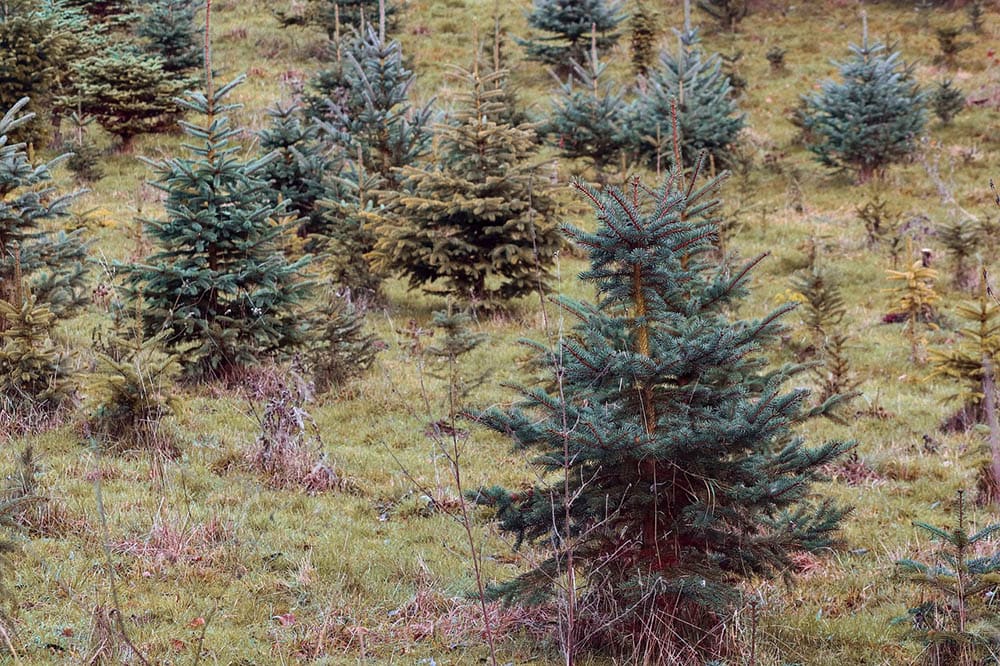
3. Bark Texture and Thickness
Spruce trees have bark that tends to be quite thin with ridges running along with it lengthwise that will appear rather raised from the surrounding bark. The height of these ridges can range from an inch two tall to over 6 inches tall. If you are not able to feel the bark with your hand, look at it closely with a magnifying glass instead.
4. The Cones
Spruce trees produce cone-shaped seeds that can range in color from red to green depending on the species of the spruce tree that they belong to (red spruce cones are bright red while Engelmann spruce cones are dark green). These seeds or pinecones typically appear extremely prickly due to stiff bristles sticking out of them. When these bristles fall off, they leave behind holes in the cone scales which gives it more of an hourglass shape than circular like other types of pinecones.
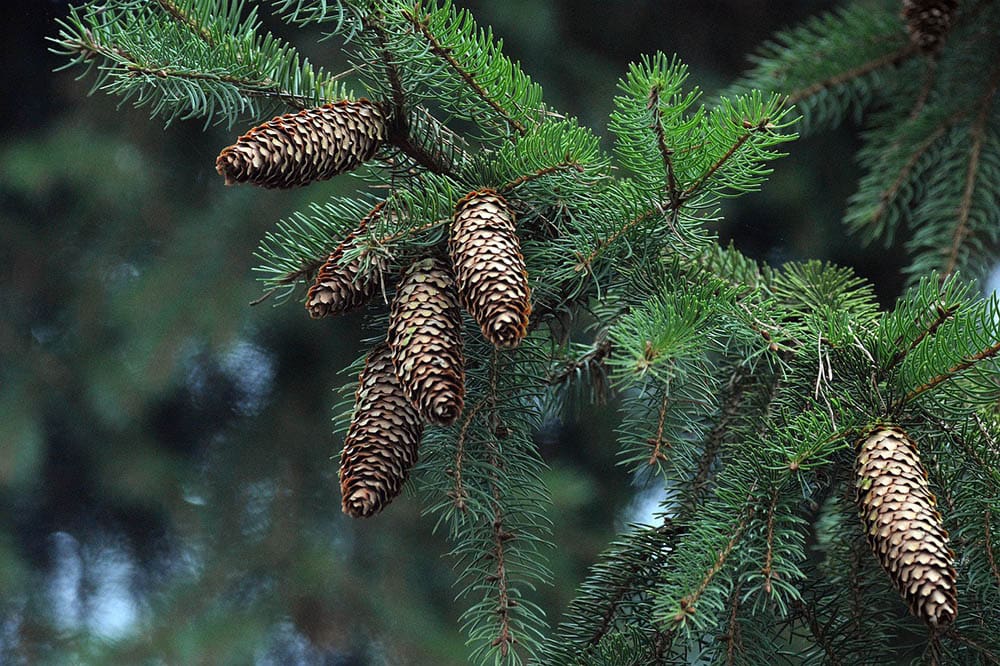

What Is the Difference Between Spruce and Pine Trees?
Pine trees and spruce trees are two types of evergreen trees. They are both conifers, meaning they have cones and needles. However, there are some key differences between these two types of trees.
The most obvious difference is that pine trees have long needles, while spruce trees have short needles. Pine needles typically grow in clusters of three, while spruce needles grow in pairs.
Another difference is the shape of the tree. Pine trees tend to be taller and more slender than spruce trees. Spruce trees tend to be shorter and wider.
Pine trees are also more common than spruce trees. There are over 100 different species of pine tree, while there are only about 30 different species of spruce trees.
- Related Read: 10 Different Types of Deciduous Trees (With Pictures)
Conclusion
Now that you know all about the different types of spruce trees, it’s time to choose the perfect one for your needs. Each type has its own unique characteristics, so be sure to pick the right one for your landscape.
Featured Image Credit: Pixabay
Contents

